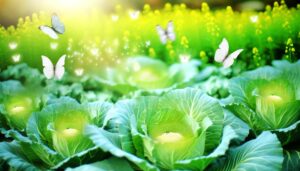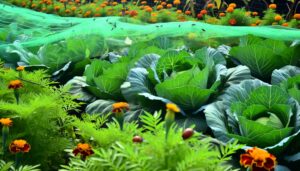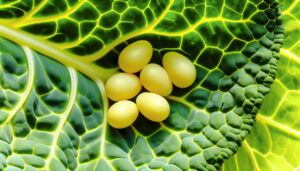How to Observe the Life Cycle of the Cabbage White Butterfly in Your Garden
The life cycle of the Cabbage White Butterfly, Pieris rapae, begins with the female laying small yellow eggs on the underside of host leaves, typically cruciferous plants. After five to seven days, larvae hatch and voraciously consume the foliage through five instar stages, lasting two to three weeks.
They subsequently enter the pupal stage, transforming into a chrysalis where tissue reorganization occurs for one to two weeks. The adult butterfly then emerges, expanding its wings and preparing for flight.
Their behaviors, from foraging to mating, are intricately adapted for survival and reproduction. Each of these stages reveals fascinating aspects of their life cycle.
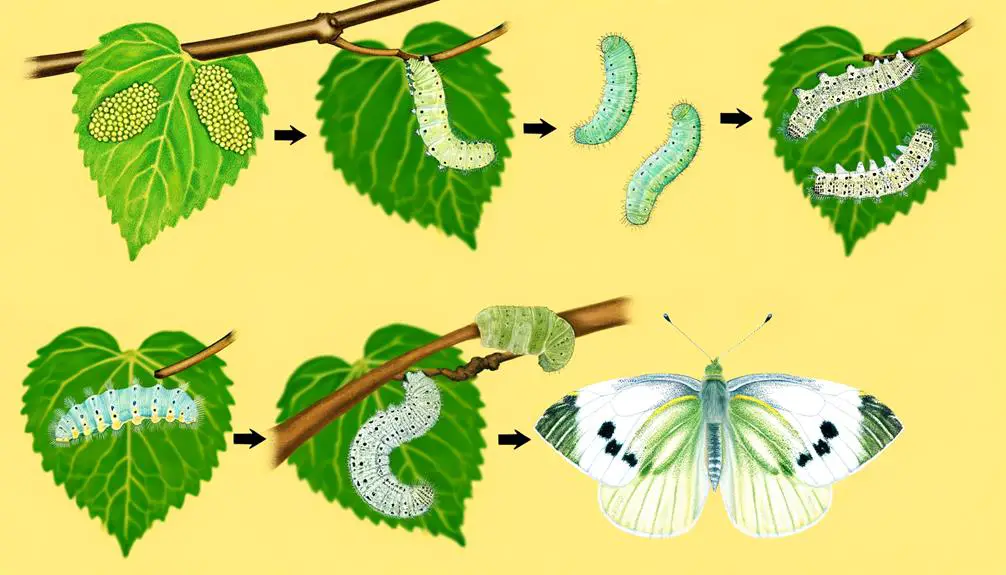
Key Takeaways
- Female butterflies lay yellow, conical eggs on the underside of host plant leaves.
- Larvae hatch as green caterpillars and feed voraciously on cruciferous plants.
- The larval stage involves five instars, lasting two to three weeks.
- Pupation involves metamorphosis into a chrysalis, lasting one to two weeks.
Egg Stage
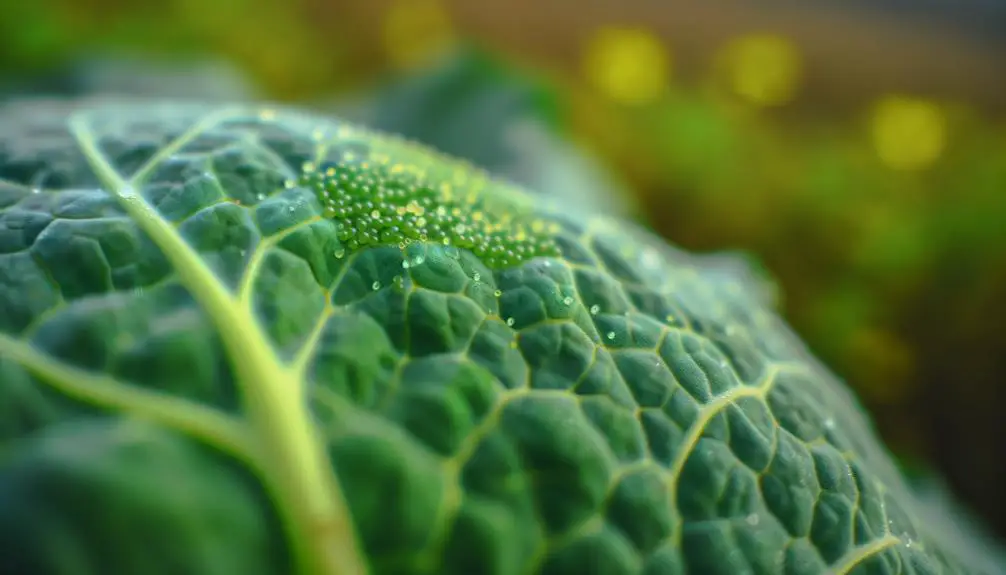
The egg stage of the Cabbage White Butterfly (Pieris rapae) begins when the female deposits her small, yellow, conical eggs on the underside of host plant leaves, typically from the Brassicaceae family. These eggs are usually laid singly, ensuring ample resources for the emerging larvae.
The eggs measure approximately 1 millimeter in length and are covered with fine longitudinal ridges. Within five to seven days, embryonic development occurs, influenced by ambient temperature and humidity. The eggs’ yellow hue gradually deepens, indicating imminent hatching.
This stage is essential as it sets the foundation for the larvae’s successful growth by ensuring they start life on nutrient-rich foliage. Understanding the egg stage is important for managing populations in agricultural settings.
Larval Stage
Upon hatching, the larval stage of the Cabbage White Butterfly commences with the emergence of small, green caterpillars that immediately begin consuming the host plant’s foliage.
These larvae exhibit voracious feeding behavior, primarily targeting cruciferous plants such as cabbage, kale, and broccoli. Their bodies are covered with fine, short hairs and exhibit a series of yellow dorsal stripes.
The larval stage consists of five instars, or growth phases, during which the caterpillar undergoes several molts to accommodate its increasing size. This stage is critical as it allows the caterpillar to accumulate substantial energy reserves essential for subsequent developmental stages.
The duration of the larval stage is typically around two to three weeks, contingent on environmental conditions like temperature and food availability.
Pupal Stage
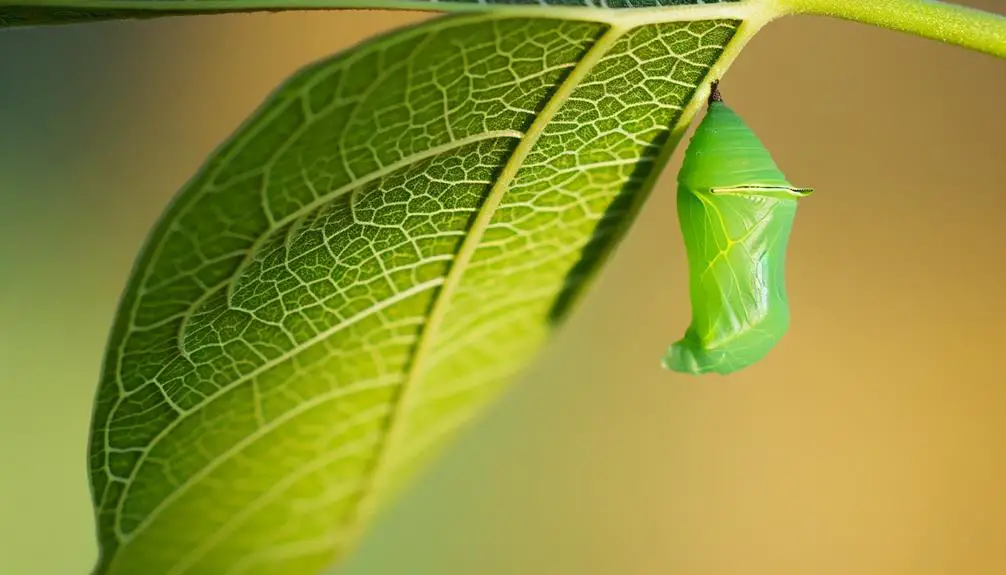
Frequently, the change from the larval to the pupal stage marks a critical metamorphosis wherein the caterpillar forms a chrysalis, undergoing significant physiological transformations.
In the case of the Cabbage White Butterfly (Pieris rapae), the larva secures itself to a substrate using a silk girdle and transforms into a pupa. During this period, the organism’s tissues are broken down and reorganized through histolysis and histogenesis.
The chrysalis, or pupa, is typically green or brown, providing camouflage against predators. The duration of the pupal stage varies, generally lasting from one to two weeks, depending on environmental conditions such as temperature.
This stage is essential for the development of adult structures, including wings, antennae, and reproductive organs.
Adult Emergence
After completing the pupal stage, the adult Cabbage White Butterfly emerges from the chrysalis, a process known as eclosion. During eclosion, the butterfly exerts pressure to break free from the chrysalis shell using specialized enzymes to soften its casing.
Upon emergence, the butterfly’s wings are initially crumpled and wet. Hemolymph, the insect’s blood equivalent, is pumped into the wing veins, causing the wings to expand and harden. This process, known as wing expansion, is critical for flight readiness.
The adult butterfly then rests, allowing its wings to fully dry and harden, which typically takes a few hours. Once the wings are fully functional, the Cabbage White Butterfly is prepared to begin its adult life phase, focusing primarily on reproduction and feeding.
Butterfly Behavior
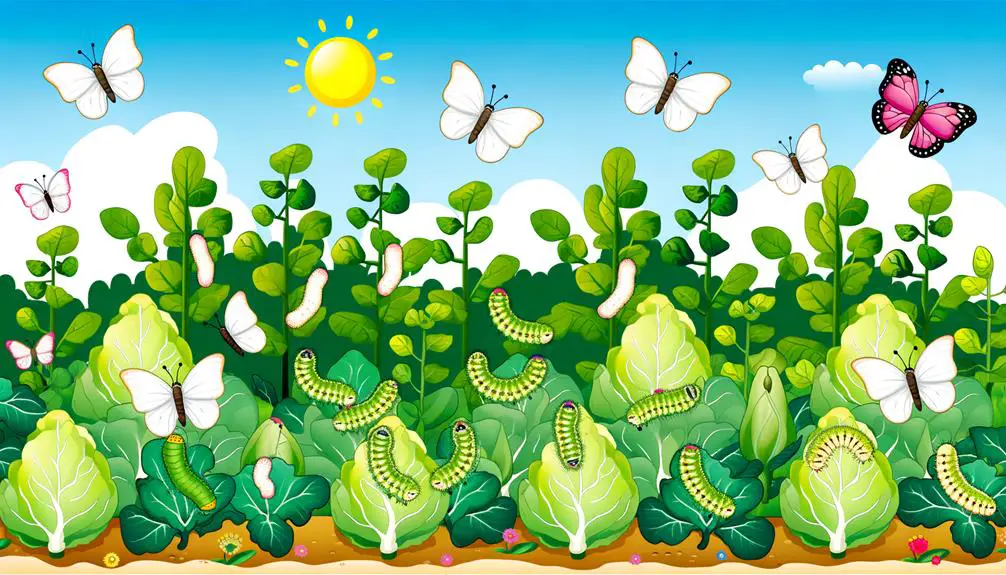
The Cabbage White Butterfly exhibits a range of behaviors that are essential for its survival, including foraging for nectar, mating rituals, and oviposition on host plants.
Foraging involves locating and extracting nectar from various flowering plants, providing the necessary energy for daily activities.
Mating rituals include a series of visual and chemical cues, where males use pheromones to attract females.
Once mating is successful, females engage in oviposition, carefully selecting cruciferous host plants to lay their eggs, ensuring ideal conditions for larval development.
These behaviors are driven by evolutionary adaptations that maximize reproductive success and survival.
Understanding these behaviors provides insight into the ecological role of the Cabbage White Butterfly and its interactions within its habitat. Gardeners often seek natural ways to repel Cabbage White Butterflies in order to protect their crops from larval damage. Planting aromatic herbs like thyme and rosemary can help deter these butterflies while also attracting beneficial pollinators.
Conclusion
To sum up, the life cycle of the cabbage white butterfly, from egg to adult, is nothing short of nature’s grand spectacle of metamorphosis.
The creature’s journey through the egg, larval, pupal stages, and final emergence as an adult butterfly is an intricate dance of biological processes.
One might jest that the cabbage white butterfly’s meticulous transformation only underscores nature’s penchant for drama, ensuring that even the simplest garden pest achieves a grand, albeit brief, moment of glory.




